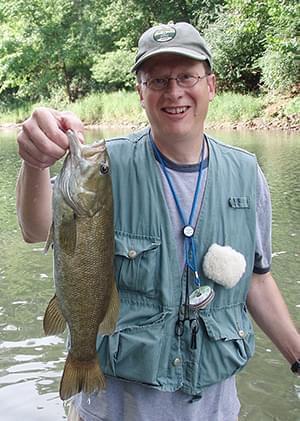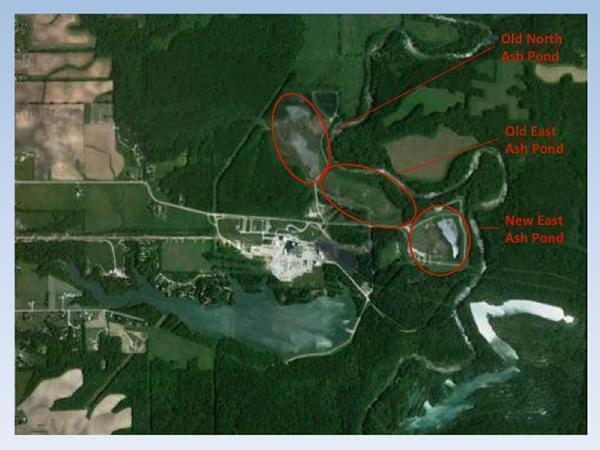Speak out to protect the Middle Fork
If you’ve canoed or fished the Middle Fork of the Vermilion River, you probably already understand why people who love it worked so hard for its inclusion in the “National Wild and Scenic Rivers” system. And to date it’s still the only Illinois waterway with that designation.
The Middle Fork is distinguished from most other streams in east central Illinois by its rock and gravel bed and its remarkably clean water. It supports a great diversity of fish—from tiny, colorful darters to larger sport fish such as channel catfish and smallmouth bass—as well as mussels, crayfish and a variety of other invertebrates.

Author with a nice Middle Fork smallmouth
In recent years river otters have thrived on the Middle Fork, thanks to reintroduction by the Illinois Department of Natural Resources, and bald eagles now regularly nest along the river, too. In all, it provides habitat for 24 species that are threatened or endangered, and it’s connected with three areas designated as state nature preserves because of their importance to rare species.
What most people don’t see as they recreate on the Middle Fork is the “accident” waiting to happen at the site of the now shuttered Dynegy power plant just north of Kickapoo State Park—that would be the three ponds where coal ash produced when the plant was operating is stored.
What’s wrong with coal ash? It contains high levels of harmful heavy metals—arsenic, lead and zinc among them—that can poison wildlife and threaten human health.
Traci Barkley, water resources scientist with Prairie Rivers Network, points out that there are already problems at the Dynegy site on the Middle Fork. Among them, the groundwater adjacent to and underlying the coal ash ponds is contaminated with coal ash pollutants, and that groundwater is connected to the river. In addition, the ponds were established over mine voids, so their walls are destabilized by subsidence.
Worse still, two natural behaviors of the river, which are beyond effective control of Dynegy or anyone else, virtually guarantee that coal ash stored in the floodplain will wind up in the river itself eventually. Rivers move. The Middle Fork is meandering toward the coal ash ponds, and attempts to control it with rock structures have failed. The streambed is now only a stone’s throw from the closest of the coal ash ponds. And rivers flood. When they do, they mobilize just about everything they encounter, with no regard for human arrangements on the landscape.
Sadly, you don’t have to imagine what it looks like when a coal ash pond situated next to a river fails; instead, you can just search on the Web for photos of the Dan River in North Carolina. Early last month, a Duke Energy pond released 39,000 tons of coal ash into the Dan, poisoning more than 70 miles of river. (For starters, Appalachian Voices, a North Carolina-based environmental nonprofit group has a photo set at http://www.flickr.com/photos/appvoices/sets/72157640498306435/.)

Satellite view showing proximity of ash ponds to river
Dynegy has proposed a plan for closing its coal ash ponds on the Middle Fork that would leave its waste in place under a heavy cover, but Prairie Rivers Network and others are asking that the state protect the public interest by requiring something more. They want Dynegy’s coal ash removed from the floodplain and stored in a lined landfill cell. That would prevent further groundwater contamination or the occurrence of a tragedy like the one on the Dan River.
Find out how you can lend your voice to this effort, and to the broader fight to strengthen the Illinois Environmental Protection Agency’s rules on coal ash ponds, by visiting Prairie Rivers Network http://prairierivers.org.

